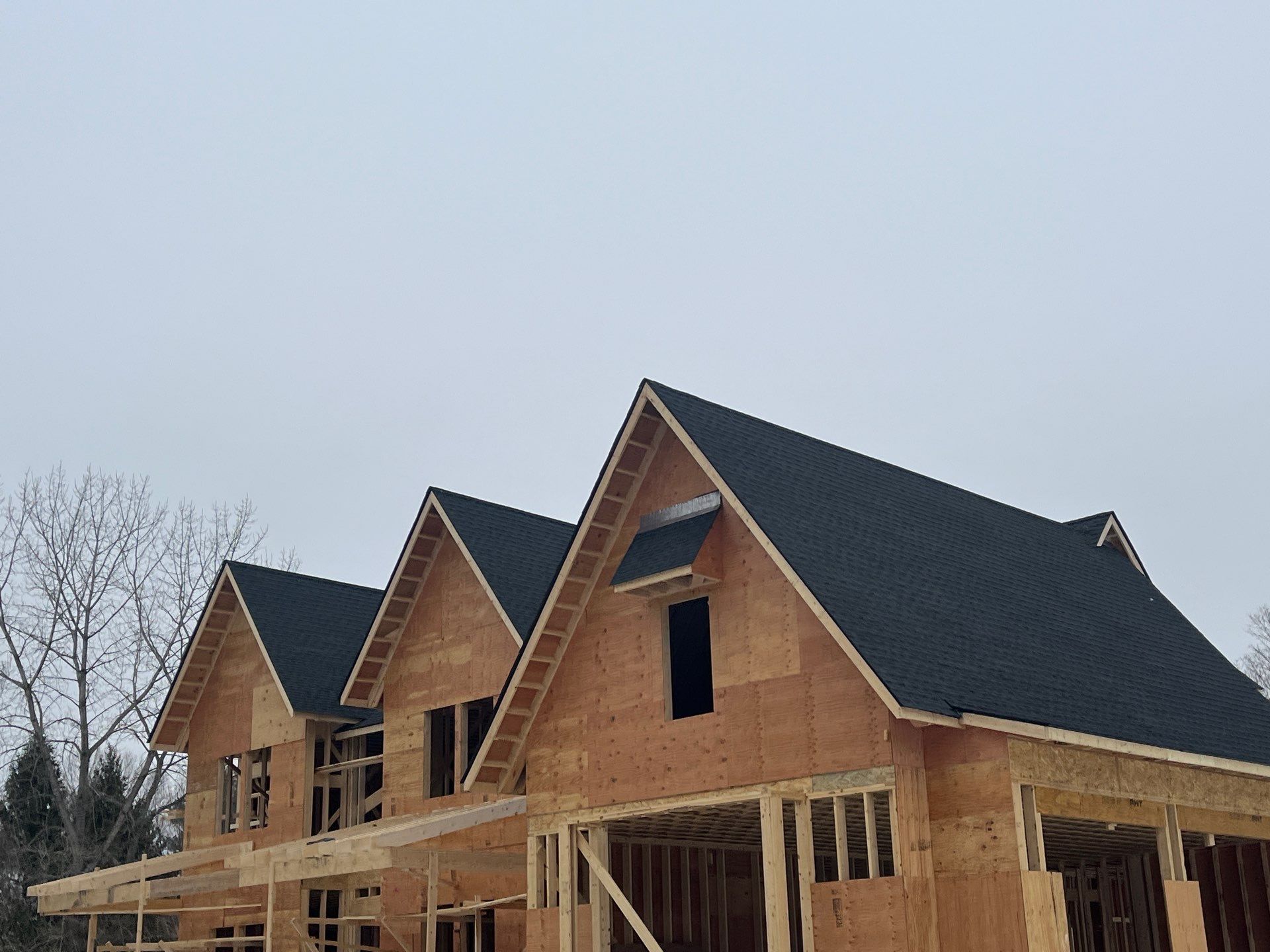
How Long Does a Slate Roof Last? Lifespan & Care Tips
When investing in a roof, longevity is a key consideration, and few materials can rival the enduring lifespan of natural slate. A slate roof isn't just a covering; it's a long-term asset, renowned for its incredible durability and ability to outlast most other roofing materials, often for generations. Homeowners choosing slate can realistically expect it to protect their property for 75 to 150 years or even more. This remarkable lifespan, however, is influenced by several critical factors, from the quality of the slate itself to the diligence of its maintenance.
Factors that influence slate roof lifespan
The impressive longevity of a slate roof is not a guarantee but a potential, shaped by several key elements:
Quality of Slate:
Grade: Slate is categorized by its expected lifespan, typically as S-1 (over 75 years), S-2 (40-75 years), or S-3 (20-40 years). High-grade, dense, and less absorptive slates (like those from specific quarries known for "hard slate") will far outlast lower-grade or softer varieties.
Origin: The geological composition varies by quarry. Slates from certain regions are known for exceptional durability, sometimes exceeding 200-300 years, while others may be more prone to flaking or delamination over time.
Installation Quality: This is arguably the most critical factor. Even the highest quality slate will fail prematurely if not installed correctly.
Skilled Craftsmanship: Slate roofing is a specialized art. Proper overlapping (headlap), correct nailing techniques (using non-corroding fasteners like copper), and meticulous flashing work are essential for a watertight and long-lasting system.
Underlayment: A robust underlayment (e.g., heavy felt or synthetic membrane) beneath the slate provides an additional layer of protection and contributes to longevity.
Roof Pitch and Design:
Steep Slopes: Slate performs best on steeper roofs because the increased pitch allows for rapid water runoff, minimizing moisture retention and preventing debris accumulation. This reduces wear and tear.
Good Drainage: A well-designed roof with effective gutters and downspouts ensures water is directed away efficiently, preventing pooling and prolonged exposure to moisture.
Environmental Conditions: While slate is extremely resilient, continuous exposure to certain conditions can impact its lifespan.
Freeze-Thaw Cycles: In very cold climates, repeated freezing and thawing of water can, over many decades, contribute to the degradation of less dense slates.
Pollution: Acid rain or heavy air pollution can, over a very long time, have a minor corrosive effect.
Maintenance tips to extend durability
While slate roofs are low-maintenance compared to many other materials, proactive care is essential to maximize their incredible lifespan.
Regular Inspections: Have your slate roof professionally inspected at least once a year, and especially after severe weather events. Look for:
Slipped, cracked, or broken slates.
Damaged or corroded flashing around chimneys, vents, and valleys.
Excessive moss, algae, or lichen growth.
Accumulation of debris (leaves, branches) in valleys or gutters.
Prompt Repairs: Address any identified issues immediately. A single cracked or slipped slate can allow water penetration, leading to damage to the underlayment and the underlying roof structure, which can quickly escalate into larger, more costly problems.
Gutter and Downspout Cleaning: Ensure gutters are always clear of debris to allow for proper water drainage. Clogged gutters can cause water to back up onto the roof, potentially leading to ice dams in cold climates and accelerated decay.
Moss and Algae Management: While not always immediately damaging, heavy moss and lichen growth can retain moisture against the slate, promoting deterioration. A professional can recommend safe removal methods, avoiding harsh chemicals or high-pressure washing that can damage the slate.
Trim Overhanging Branches: Trees overhanging the roof can drop debris, scratch slates, and create shaded, damp areas conducive to organic growth. Keeping branches trimmed back protects the roof.
Minimize Foot Traffic: Slate is durable but brittle. Avoid walking on the roof whenever possible. If access is necessary for maintenance or repairs, always use experienced slate roofing professionals who utilize specialized equipment (like crawling boards) to distribute weight and prevent breakage.
Weather and foot traffic effects
These two factors, while seemingly straightforward, play significant roles in a slate roof's long-term performance.
Weather Effects:
Wind: While slate's weight provides good wind resistance, extreme winds can occasionally dislodge or shift individual slates if fasteners are compromised or if installation was less than perfect.
Hail: High-quality, dense slate is generally very resistant to hail. However, exceptionally large or prolonged hailstorms can cause cracks, especially on older, more brittle slates.
Temperature Extremes: While slate handles heat and cold well, rapid and severe temperature fluctuations over many decades, particularly combined with moisture (freeze-thaw cycles), can contribute to a natural weathering process that may eventually lead to delamination or cracking in some types of slate.
UV Resistance: Slate is naturally highly resistant to UV degradation, meaning it won't fade or become brittle from sun exposure in the way many synthetic materials do.
Foot Traffic Effects:
Brittle Nature: Despite its hardness, slate is brittle. Walking directly on slate tiles can easily crack or break them, especially if not distributed evenly or if the slates are cold.
Damage to Underlayment/Structure: Repeated or improper foot traffic can also damage the underlayment or the roof deck beneath the slates, creating hidden vulnerabilities that lead to leaks.
Professional Access: Any work that requires walking on the roof should only be performed by roofers experienced with slate, who know how to navigate the roof safely and without causing damage.
Installation quality and warranty factors
The initial installation and the accompanying warranties are critical indicators of a slate roof's expected longevity and your protection as a homeowner.
Installation Quality: This cannot be overstressed.
Certified Professionals: The most significant factor determining a slate roof's lifespan is the skill of the installers. Hire a roofing contractor with verifiable experience and specialized training in slate roofing.
Correct Fasteners: Use of copper or stainless steel nails (which won't rust and corrode like galvanized steel) is essential for the long-term integrity of the installation.
Proper Overlap (Headlap): Ensuring each slate tile overlaps the ones below it by the correct amount is crucial for watertightness. Insufficient headlap is a common cause of premature leaks.
Flashing: Meticulous installation of flashing (typically copper, lead, or stainless steel) at valleys, chimneys, dormers, and other transitions is vital to prevent water penetration.
Warranty Factors:
Material Warranty: Natural slate typically comes with very long material warranties, often 50 years, 75 years, or even "Limited Lifetime" (which can be 100+ years), reflecting its inherent durability as a stone.
Workmanship Warranty: A reputable slate roofing contractor will provide a substantial workmanship warranty (e.g., 5-10 years or more) on their installation. This is critical, as most slate roof issues stem from improper installation, not material defects.
Transferability: Inquire if the warranties are transferable to future homeowners. A transferable warranty can significantly enhance the resale value of your home.
Signs of wear to watch for
Regularly inspecting your slate roof, even from the ground with binoculars, can help you identify early signs that may require professional attention.
Cracked, Chipped, or Broken Slates: These are the most obvious indicators of damage. Look for visible lines, missing corners, or complete breaks.
Slipped or Missing Slates: Gaps where slates should be, or slates that appear to have slid down the roof. This often indicates "nail sickness" (corroded or failing nails) on older roofs.
Fading or Discoloration (beyond natural weathering): While slate weathers gracefully, significant or uneven discoloration, or the appearance of rust streaks, could indicate issues with the slate's quality or mineral content.
Granular/Flaking Surface: Some softer slates may begin to flake or delaminate over many decades, losing their smooth, dense surface.
Moss, Algae, or Lichen Buildup: While not necessarily a sign of wear on the slate itself, heavy organic growth signals that the roof isn't drying properly, trapping moisture that can accelerate decay or hide underlying issues.
Water Stains on Ceilings or Walls: This is a clear sign of a leak, indicating a breach in the roof system (likely a cracked slate, flashing issue, or compromised underlayment).
Sagging Roof Sections: A very serious sign that could indicate structural problems beneath the roof, potentially due to long-term water damage.
A slate roof is an extraordinary investment, offering unmatched beauty and protection for a century or more. Its longevity is a testament to natural geological processes and, crucially, to the skill of its installation and the diligence of its care. By understanding these factors and performing regular, professional maintenance, you can ensure your slate roof truly becomes a timeless masterpiece protecting your home for generations. Masterpiece Roofing specializes in the expert installation, meticulous repair, and enduring maintenance of slate roofs, ensuring your investment stands the test of time.
Considering the ultimate in roofing longevity and classic appeal for your home? Contact Masterpiece Roofing today for a comprehensive consultation and a detailed estimate.
Office: 1248 Highland St, Holliston, 01746 MA
(508) 882-6080
Email: office@buttonmasterpieceroof.com
Site: www.masterpieceroof.com
Assistance Hours
Mon – Fri 8:00am – 4:00pm

